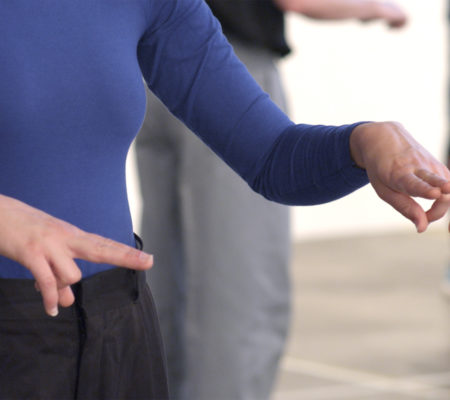







JULIEN PRÉVIEUX | FRANCISCO SOBRINO | RAPHAEL ZARKA
In situ 28 May 2015 - 25 July 2015The Jousse Entreprise gallery is pleased to be presenting the group show
JULIEN PREVIEUX / FRANCISCO SOBRINO / RAPHAEL ZARKA which focuses on the issue of the gesture.
Julien Prévieux’s (born in 1974, lives and works in Paris / Laureat of Duchamp Prize) video What Shall We Do Next? séquence n°2 is part of a set of three sequences: an animated film ( séquence n°1) and a performance (séquence n°3). Julien Prévieux has devised them by sampling, on the American industrial property site, gestures patented by companies, mainly in the area of new technologies. These gestures make it possible to activate functions in various kinds of apparatus, and are registered even before these latter exist. A certain number of these gestures are part of our daily round. For example the pinch to zoom ® movement, whereby imagery and words are enlarged by moving thumb and forefinger apart, was registered by Apple in 2006. Other gestures have to
do with apparatus and actions that have never seen the light of day. In this “archive of gestures in the making”, which is being forever updated, Julien Prévieux questions the ownership of our most commonplace gestures, and the way we are being permanently prompted to change the repertory of our “body techniques”, unbeknownst to us, at times with enthusiasm, at others with regret. He shows what our bodily future will definitely consists of, how we will move our hands and eyes in five or ten years. The diagram that greets us as we enter the gallery is currently on view in the Nouveau Festival at the Centre Pompidou, for the Musée du Bug, curated by Julien Prévieux. He presents an archive of the bug in art history.
Raphaël Zarka (born in 1977 in Montpellier, lives and works in Paris. He is represent by Galerie Michel Rein, Paris/Brussel) is proposing Free Ride: A Prophecy. An idea. A base and a sculpture. “In 1962, at the age of 50, an American architect by the name of Tony Smith made his first sculpture. He gave it the title of Black Box. It was a steel parallelepiped painted black, hermetically closed, whose proportions were those of a cardboard file box, enlarged five times. After Black Box, the long list of works which, in that year, ushered in Tony Smith’s late career, started with Free Ride. And for anyone who shares my experience as a skateboarder, Free Ride is not just a sculpture, it’s a prophecy.
The section of the three parallelepipeds forming it is also close to the height of a chair’s or bench’s seat. In the sculpture garden in the Museum of Modern Art in New York, when you see visitors sit- ting in metal chairs all round Smith’s oeuvre, you can’t help noticing that Free Ride is a potential bench. Otherwise put, and using skateboarding terms, needless to add, Tony Smith’s sculpture is an L-shaped ledge, a simple but effective spot.” (Raphaël Zarka – Excerpt from Free Ride, skateboard, mécanique galiléenne et forms simples, éditions B42, Paris, 2011).
Mobile, 1967, is an emblematic work by Francisco Sobrino (1932-2014, born in Guadeljara, Spain). Mobile was one of the first works to involve the spectator’s gesture to create movement, in a mini- mal and radical way. This work has been exhibited in major shows about the GRAV.
Francisco Sobrino is a joint founder of the GRAV (Groupe de Recherche d’Art Visuel) in Paris in 1960, together with a handful of artists like François Morellet and Julio Le Parc.
“Like almost all of the GRAV’s works, Sobrino’s sculpture raises our awareness of how everything optical is kinematical: the different parts of a fixed object are not perceived and understood by the spectator simultaneously, but successively, in the actual time eyes and bodies take to move. Restoring all its plenitude to the indi viduality of each perceptive situation, the work confronts the moving spectator with both an object and a process. In Sobrino’s oeuvre, structure is therefore
by no means dismissed; on the contrary, it is rationalized and condensed so as to generate the luminous, perceptive phenomenon with maximum efficiency. In 1960, François Molnar used similar terms to announce this intense perceptive dialectic between structure and phenomenon that would become central to the GRAV’s existence: “if information theory uses the notion of order and chaos, we are delighted, because the work of art in fact lies between these two extremes.”
(Matthieu Poirier)
+ The sculpture The real Model 63, 2008 Julien Prévieux is shown in the exhibition at the School of Fine Arts from 29 to 31 May on the occasion of “Choices Paris”.
Vernissage : 28/05/2015 7:00 pm
Exhibition's artists >

